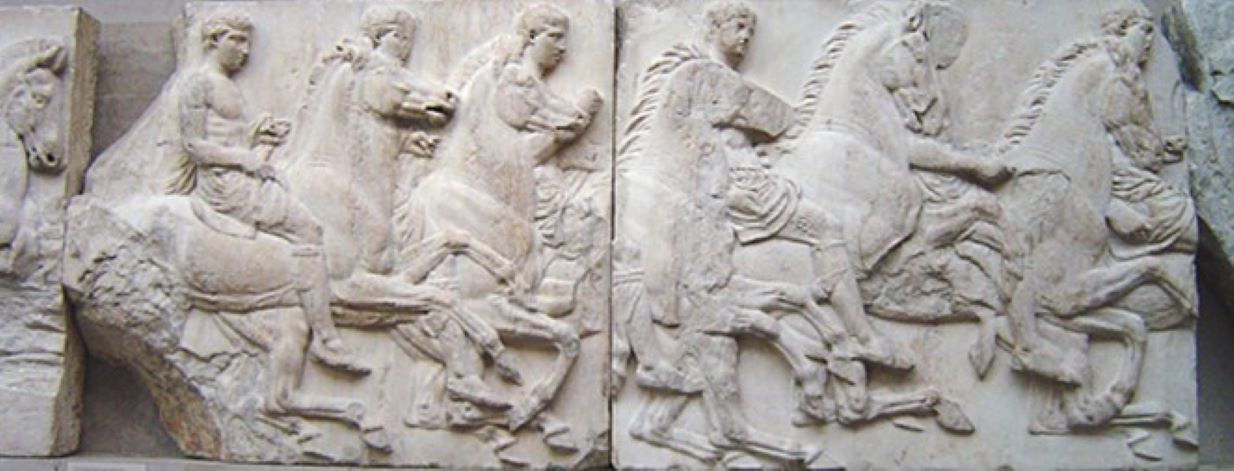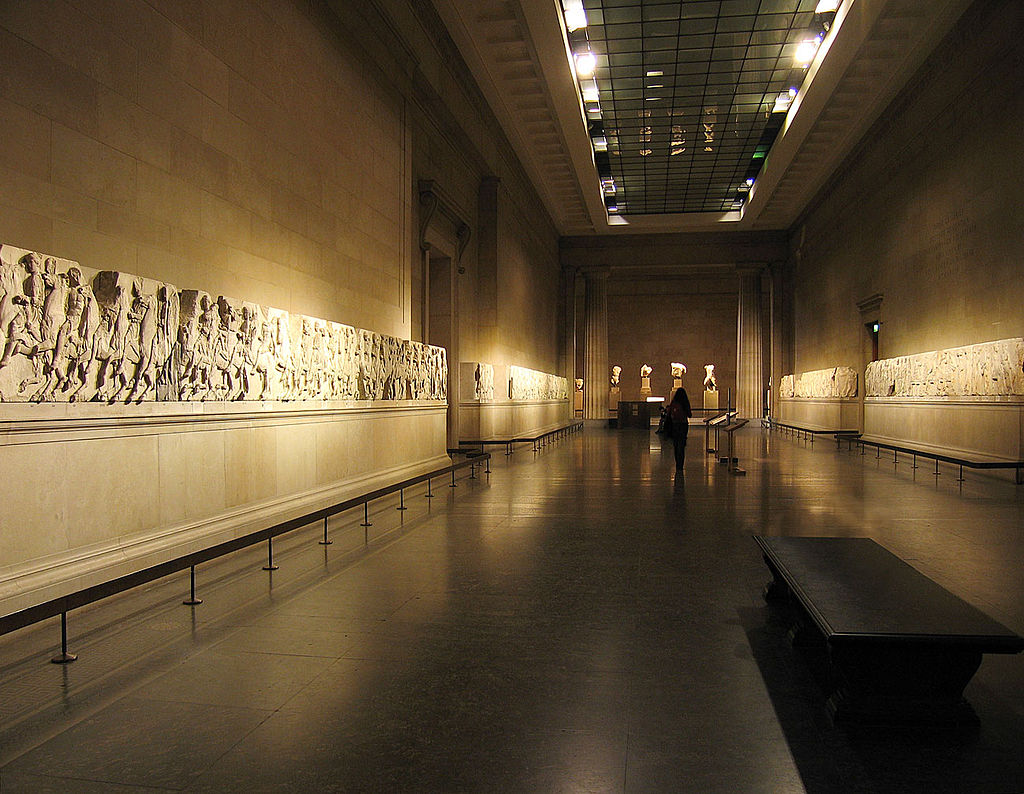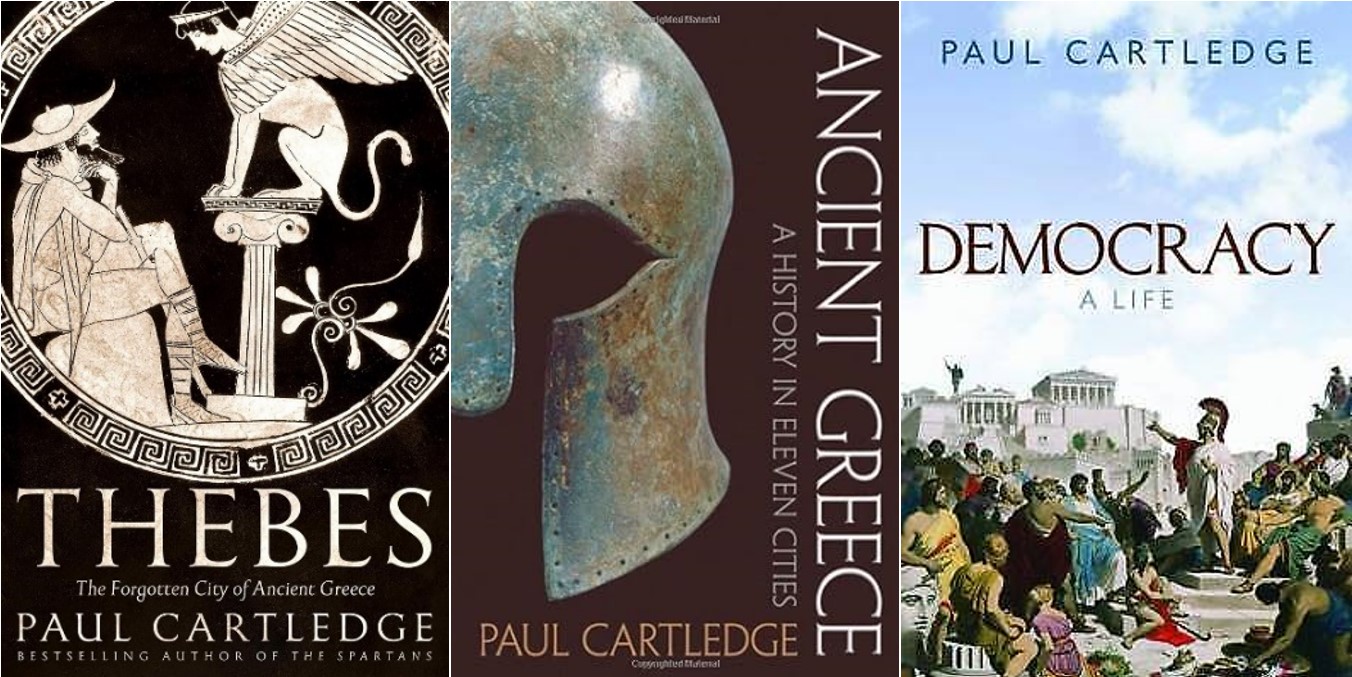A rejoinder to Dominic Selbourne.
Back in 2017 Classics for All hosted a debate (The Case for Lord Elgin | classicsforall.org.uk) on the future of the Parthenon Sculptures (the ‘Elgin Marbles’) which have been housed in this country since Lord Elgin brought them back from Greece in the 19th century. In that debate the case for retaining the sculptures was made by Dominic Selbourne: Paul Cartledge was one of his opponents and presents his case now, as follows:
I do remember well, too well, that 2017 debate—not only and not least because we lost—but also because the voting audience consisted of the sort of well educated, well informed, unlikely to be wildly nationalistic or irrational people of a certain age whom I had hoped to be susceptible to persuasion by fact-based, unemotional arguments. But no: whereas I was advocating reunification in the Parthenon Gallery of the specially dedicated new (opened in 2009) Acropolis Museum of all (not just those in London) Parthenon Marbles/Sculptures currently outside Greece, they by a good majority voted in favour of the status quo, as regards the location of the mislabelled ‘Elgin Marbles’: that is, of the Parthenon Marbles/Sculptures from the wider Elgin Collection bought by the UK government in 1816 and handed over in trust for the nation to the British Museum in 1817.
Since 2017, however, much has changed, not only or indeed most importantly in the UK but globally; and all to the benefit, I suggest, of the reunification cause. Before I look at those changes, let me just first restate very briefly the three main counter-arguments in favour of reunification (no longer, as originally in the 1980s, ‘restitution’, since that term can imply legally determinable and applicable illicit appropriation and thereby conjure unfortunate claims and counter-claims of legal ‘ownership’).
1. The Parthenon (not the whole building’s original name) was constructed on the Athenian Acropolis between 447BC and 432BC as part and parcel of an entire Acropolis building programme. It was and is a building not just on the Acropolis but of the Acropolis (sometimes referred to as the Sacred Rock). That building still stands after 2455 years (no BC or AD ‘0’). It is admittedly not the building it once was: the passage of years, environmental degradation, vandalistic depredation, and a massive 1687 explosion have seen to that. But it is still, recognisably, a or rather the Parthenon, a world heritage site, a globally recognised symbol. The original is also widely thought to have been one of the most extraordinary buildings ever created by human ingenuity, skill and labour: a treasure-house of astonishing mathematical proportions, adorned with stunningly beautiful local-marble sculpture. It just doesn’t seem right, indeed it seems rather monstrous to many – a growing number and proportion - of us that the possession of a sizeable chunk of its extant sculpture should be in the hands of another, ‘barbarian’ country, hundreds of miles away and in a display environment as far removed from and as alien to its original setting as can possibly be imagined.
2. Which takes us directly to the second argument, to do with display and accessibility and appreciation. As noted above, Athens’s Acropolis Museum in its current iteration was opened in 2009. Its top floor is given over exclusively to the Parthenon. Like Gallery 18 of the British Museum, the Duveen Gallery named for the art-dealer, former Trustee and interventionist benefactor of the Museum, the Parthenon gallery’s dimensions designedly echo those of the original, but there the comparison ends – or rather the contrasts start. From the huge picture windows of the Acropolis Museum, the Parthenon itself is clearly visible above. The light – the famous Athenian light – that streams inside physically establishes and reinforces the symbolic, historical linkage between museum display and original building.
Given the state of preservation, no one can be absolutely 100% certain exactly where every single preserved fragment of the unique frieze originally sat – but at least the Acropolis Museum display makes a good fist at attempting authenticity and historical accuracy. The Duveen display – that is, Duveen’s own imposed ordering – makes a complete nonsense of the original (as one of the current B.M. Trustees, a Cambridge colleague of mine, once so eloquently pointed out). Duveen wished to give the impression that the British Museum’s holding was pretty much complete: hence every slab is out of place, hence no use of plaster copies to indicate what is not held. Moreover, whereas the British Museum’s frieze holding is displayed on the inside walls of an enclosed and very poorly lit space, the Acropolis Museum’s reconstruction has them on the outside, and, together with the originals, uses plaster casts for the slabs the British Museum holds.
Besides the frieze there are two other kinds of Parthenon Sculptures/Marbles: metopal and pedimental. There are extant metopes of which, absurdly, one surviving part is in Athens, an adjoining part in London. One could go on. The main point is that the Acropolis Museum next to and intervisible with the Acropolis itself is where whatever survives of the Parthenon that’s not still actually on the Acropolis building properly belongs and should be viewed.
3. Finally, thirdly, the moral-cultural argument. What the 7th Lord Elgin managed to obtain and have shipped to England in the first decades of the 19th century was due to a unique imperial and international conjunction. There was no independent Greek state then, Greek lands were part of the Ottoman empire (to which Lord Elgin was the UK’s ambassador, and from which Greeks were to revolt just a few years later, preliminary to the formation of a semi-independent Greek nation-state in 1832), Athens was an outpost of empire, the Acropolis a fortress (like Dublin Castle was for the British Empire), Ottoman Turkey was at war with the UK’s enemy, Napoleonic France (my enemy’s enemy is my friend), and the Sultan and his court frankly couldn’t give a damn for the preservation let alone retention of non-(because pre)-Islamic idols that had great ancestral significance even for Christian Greeks but absolutely none for them.
Enter Lord Elgin. Even in the 1800s his and his on-the-spot cohorts’ actions (bribery, vandalism, expropriation and export of antiquities) were very seriously questioned, on aesthetic, moral, financial and what we might call political-cultural grounds. In 2023 the UK’s current stance on ‘ownership’ of the Elgin Collection’s Parthenon component led to a most unseemly, indeed deeply shameful, spat between the Prime Ministers of two allied European countries at a time of a major European war. In 2024 Elgin’s manoeuvres, however (well or ill) motivated, would be deemed legally actionable. How much better for the UK Parliament either to revoke or to amend the 1816 and 1963 Acts, and return the Parthenon Marbles/Sculptures to Athens, for which the UK and its British Museum would receive a tremendous antidosis, return-gift, in the form of promised major and unique loans from Greece.
In conclusion: it is the return only of the Parthenon Marbles/Sculptures of the Elgin Collection that Greece is requesting, not even the famous Caryatid column sawn from the neighbouring Erechtheum temple. The British Museum’s massive collection of other ancient Greek antiquities is under no threat, or even question, whatsoever, at least not within the framework of the ‘Elgin Debate or Dispute’. And since the Parthenon was and is unique, and a unique case, reunification of its sculptures has absolutely no implication for the status of any other of the thousands of ancient Hellenic artefacts in the British Museum’s amazing collection.
II. So, what’s new since 2017? The British Committee for the Reunification of the Parthenon Marbles (BCRPM), active membership of which continues to grow apace, is now one of a score of national campaign groups operating under the broad umbrella of the IARPS in support of Greece’s request. The current Greek government, under its present Prime Minister, is particularly and heroically active in pressing this issue among the many that preoccupy it geopolitically (Cyprus, Turkey, Ukraine…), reinforced by the recent (September 2021) judgement of the ICPRCP (Intergovernmental Committee for Promoting the Return of Cultural Property to its Countries of Origin or its Restitution in case of Illicit Appropriation) of UNESCO: https://unesdoc.unesco.org/ark:/48223/pf0000379856.
Here at home in the UK, YouGov polls regularly register above 60% support for reunification. The UK’s main journal of record, The Times, has recently flipped its longstanding editorial policy – from a retentionist to a reunificatory stance. Other states and museums have done even better – and actually reunified: the Vatican, the Palermo Museum. Added to which are the British Museum’s own custodial problems. On top of the persistent struggle with damp in Room 18 and the spate of thefts by a rogue curator in the Greek & Roman Department, its claim to have been an exemplary caretaker of ‘its’ Marbles since 1817 has been exploded on two academic fronts: by the late William St Clair, exposing the hushed-up, irreparable damage (‘skinning’) inflicted on Duveen’s orders in the late 1930s; and lately by international human rights lawyer Professor Catharine Titi (of Greek origin, based in Paris) in her 2023 The Parthenon Marbles and International Law. The latter, conceding that in domestic—but only in domestic—law the UK does have legal title to ‘ownership’ of the British Museum holdings, demonstrates contrariwise beyond a peradventure that Elgin’s title to what he sold to the U.K. for £35,000 in 1816 was anything but Acropolis rock-solid. If his title was shaky, a fortiori so was the UK government’s in 1816.
The rest is British political history – but Acts of Parliament may be repealed or replaced with a new and improved Act. The time has come, is long overdue, to rectify by governmental action a major injustice, the major such in this country and further afield – apart, arguably, from that of the Benin Bronzes.
Full disclosure: Paul Cartledge is Vice-Chair of the British Committee for the Reunification of the Parthenon Marbles (BCRPM), a non-profit campaign group established in 1983, and an elected Vice-President of the International Association for the Reunification of the Parthenon Sculptures (IARPS)
Paul Cartledge was the A.G. Leventis Professor of Greek Culture at the University of Cambridge from 2008 to 2014, having previously been Professor of Greek History at Cambridge. He is currently A.G. Leventis Senior Research Fellow of Clare College, Cambridge. The most recent of his numerous publications include: Ancient Greece: A History in Eleven Cities (Oxford University Press, 2009, repr. in pb. as A Very Short History, 2011), Democracy: A Life (Oxford University Press, 2016, new edn with Afterword, 2018) and Thebes: The Forgotten City of Ancient Greece (Picador, 2020, pb. 2021).
DISCLAIMER: the views expressed in these articles are solely those of the author(s) and do not necessarily reflect the views of Classics for All.



